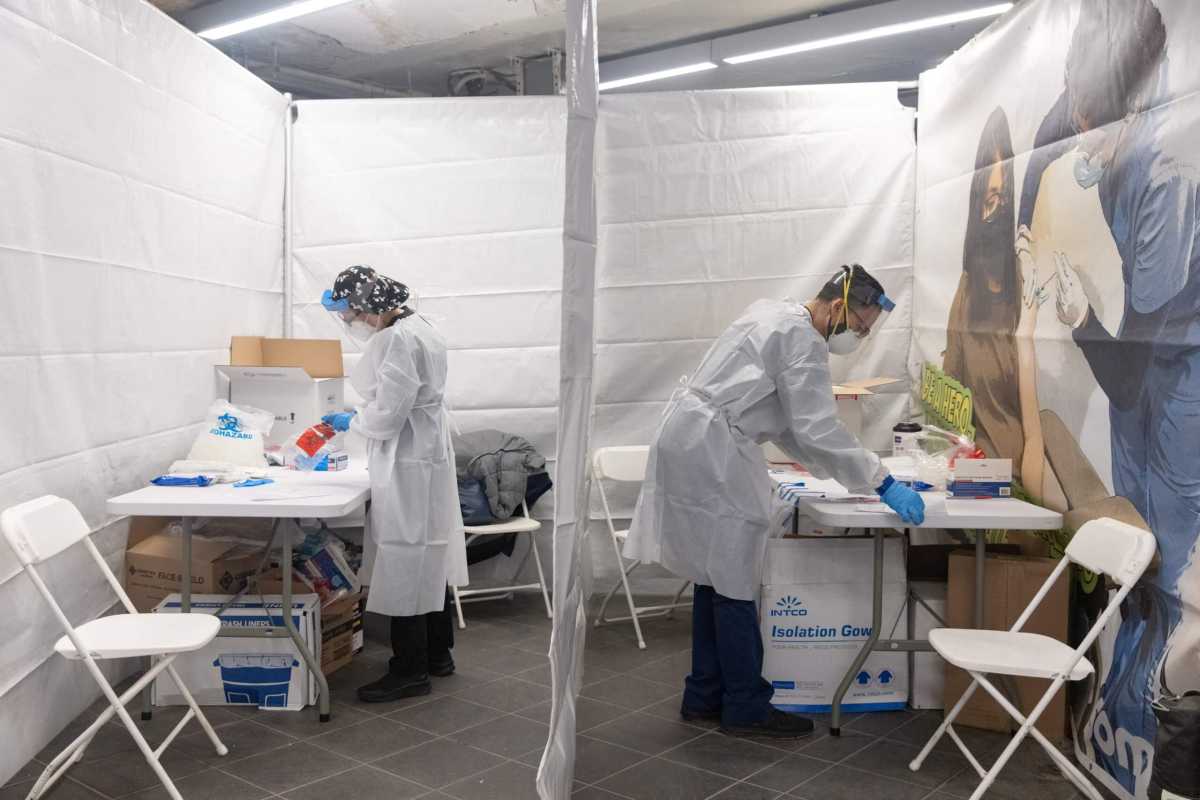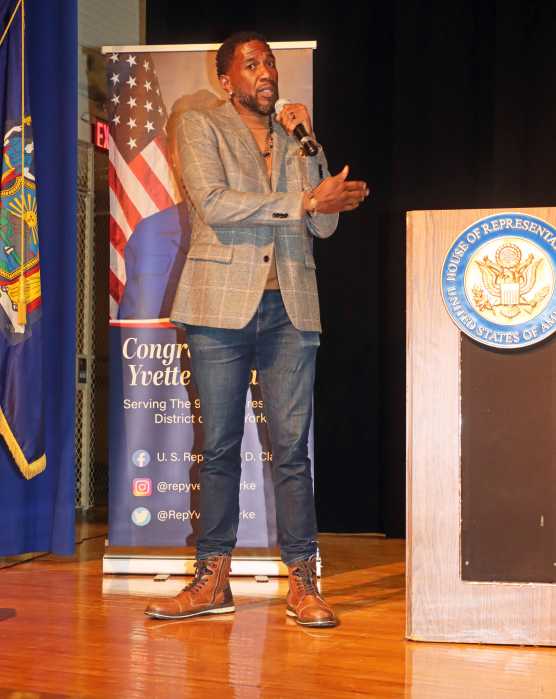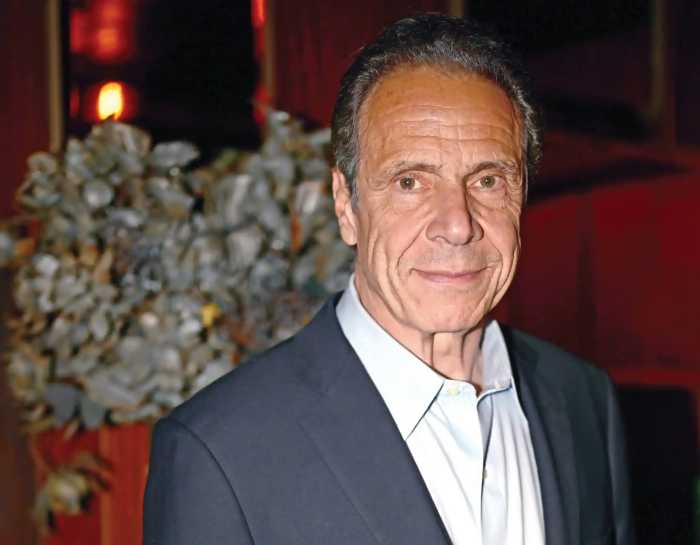New York City Public Advocate Jumaane Williams said on Dec. 20 that, while he is encouraged by some of the announced efforts to protect New Yorkers amid an Omicron wave, he is “deeply frustrated that they were not already in place.”
“While expansion in testing and provision of at-home rapid tests are essential, the long lines across the city waiting for those tests show an abundant lack of preparation by the city,” said Williams, the son of Grenadian immigrants, who continue to isolate following his positive COVID-19 diagnosis on Friday.
“Barriers to testing also disproportionately harm lower income communities of more color, showing that we are still failing to learn from the mistakes of 2020,” he added. “Given his apparent acknowledgement of the severity of risk, it is unclear to me why the mayor (Bill de Blasio) has not yet shifted city workers to remote work wherever possible ahead of the holidays, with government offices leading by example.
“That shift should occur immediately,” Williams urged. “It also seems clear that, despite calls since September, the mayor and administration have not prepared the necessary infrastructure to make it possible to do the same for schools ahead of the holidays.
“They should begin preparations now in case a remote option should be necessary after the holidays, and follow the recommendation of incoming Comptroller Brad Lander to test students and educators ahead of a post-holiday return to classrooms,” he continued. “It’s not enough, as cases increase, to tout our vaccination rates in some areas.”
Williams said while vaccination and booster shots are the best and most essential tool to protect New Yorkers, “in this moment, they are not the only tool.
“We need to adapt, to mask up and get tested, and also to avoid large holiday gatherings and unsafe environments to limit this wave, reduce the burden on our healthcare system, and prevent greater restrictions,” he said. “New Yorkers know what works and what they can do to protect themselves and each other, and government needs to provide the infrastructure to make those precautions possible.”
On Dec. 6, de Blasio announced major expansions to the “Key to NYC” program, the first-in-nation vaccination mandate for workers and customers at indoor dining, fitness, entertainment and performance venues.
Starting Dec. 14, the program requires children aged 5-11 to show proof of one vaccination dose for those venues.
On Dec. 27, New Yorkers aged 12 and older will be required to show proof of two vaccine doses, instead of one, except for those who have received the Johnson & Johnson vaccine.
The mayor also announced a first-in-the-nation vaccine mandate for private-sector workers.
The mandate, which will take effect on Dec. 27, applies to roughly 184,000 businesses.
In addition, the mayor announced that 5-11-year-old children will be required to get vaccinated to participate in high-risk extracurricular activities.
These activities include sports, band, orchestra, and dance. This requirement for the initial vaccine dose took effect on Dec. 14.
“New York City will not give a single inch in the fight against COVID-19,” said de Blasio, who will demit office on Dec. 31 because of the city’s term limit laws, which prohibit a mayor from holding office for no more than two successive, four-year terms.
“Vaccination is the way out of this pandemic, and these are bold, first-in-the-nation measures to encourage New Yorkers to keep themselves and their communities safe,” he added.
The mayor’s expansions follow recently announced vaccination mandates for city employees, childcare providers and non-public school employees.
De Blasio said 94 percent of the city workforce is vaccinated, and that nearly 6.5 million New Yorkers – including 89 percent of adults – have received at least one dose of the vaccine.
On Thursday, New York City Mayor-elect Eric Adams noted that health officials are “very carefully monitoring the spread of the Omicron variant of COVID-19 virus in New York City, as well as in other locations,” adding that Gov. Kathy Hochul has declared a state of emergency as “a precautionary measure.”
“Vaccination, mindful social distancing, and vigilantly observing hygiene protocols continue to be the best forms of defense against the spread of COVID-19 and its variants,” said Adams, who will become the second Black Mayor of New York City, when he takes office on Jan. 1, 2022. The city’s first Black mayor was the late David Dinkins.
“My office will continue to update you on the latest pandemic-related developments and protocols,” promised Adams in an email message to New Yorkers.
Earlier this month, Hochul announced that masks will be required to be worn in all indoor public places, unless businesses or venues implement a vaccine requirement.
The governor said this “a major action” to address the winter surge, as COVID-19 cases and hospitalizations rise statewide, and to be in alignment with the Atlanta-based Center for Disease Control and Prevention’s (CDC) recommendations for communities with substantial and high transmission.
Hochul said this determination is also based on the State’s weekly seven-day case rate, as well as increasing hospitalizations.
She said the new business and venue requirements, which extend to both patrons and staff, went into effect on Dec. 20 until Jan. 15, 2022, after which the State will re-evaluate, based on current conditions.
“The new measure brings added layers of mitigation during the holidays when more time is spent indoors shopping, gathering and visiting holiday-themed destinations,” said the governor in a statement. “As governor, my two top priorities are to protect the health of New Yorkers and to protect the health of our economy.
“The temporary measures I am taking today will help accomplish this through the holiday season,” she added. “We shouldn’t have reached the point where we are confronted with a winter surge, especially with the vaccine at our disposal, and I share many New Yorkers’ frustration that we are not past this pandemic yet.
“I want to thank the more than 80 percent of adult New Yorkers who have done the right thing to get fully vaccinated,” Hochul continued. “If others will follow suit, these measures will no longer be necessary.”
She said she had warned for weeks that additional steps could be necessary, stating that “now we are at that point, based upon three metrics: Increasing cases, reduced hospital capacity and insufficient vaccination rates in certain areas.”
On Dec. 20, Hochul announced that she was making US$65 million available to counties across New York State to help with the costs associated with administering vaccines and boosters, and enforcing the mask-or-vaccine mandate for indoor public places that went into effect statewide last week.
“Getting vaccinated and wearing a mask are the surest ways to fight COVID and stay safe, and this funding will help counties across the state enforce the reasonable, responsible and effective mask-or-vax mandate in place until mid-January,” the governor said. “The state is taking extensive measures to fight this pandemic and giving New Yorkers the tools everyone needs to stay safe.
“Instead of spreading COVID, let’s spread holiday cheer, and do it safely by getting vaccinated and wearing masks indoors in public spaces,” she stressed.
Hochul said up to US$1 million will be available for most counties, with larger counties eligible to receive up to $2 million.
“While it is the state’s expectation that New Yorkers will understand the importance of following the new requirements during the winter surge, and as we enter this holiday season, enforcement will be done by the local health departments,” she said, stating that the new funds will apply to expenses incurred by counties and local health departments from when the “mask-or-vaccine” mandate was announced on Dec. 10 until its expiration on Jan. 15, 2022.


























